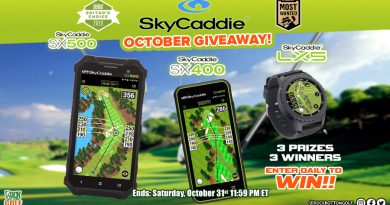Golf Driver's Buying Guide
 Picking out a new golf driver can be a big decision. The driver is the club capable of propelling the bar farthest down the golf course, making it a very important club to be able to hit consistently. You should buy the driver that best matches your swing style and playing level. Here’s Scratch’s tips on buying the perfect new driver.
Picking out a new golf driver can be a big decision. The driver is the club capable of propelling the bar farthest down the golf course, making it a very important club to be able to hit consistently. You should buy the driver that best matches your swing style and playing level. Here’s Scratch’s tips on buying the perfect new driver.
1.Take a few swings with your friends’ drivers. See how they feel and note how the golf ball flies. Remember the technical specifications of the friends’ drivers you have tried.
2.Things To Know Before Trying Clubs: First, get an accurate measurement of how far you hit the ball with a driver. This is useful information for a golf shop’s salesperson to know to help you further. Second, if you don’t know your swing speed, find a local retailer that will let you be tested for swing speed on a launch monitor. This will help determine which club characteristics are best suited to your swing. Lastly, have your wrist-to-floor measurement taken. This, combined with your height, will determine if you can use a standard-length driver shaft or if you need to add or subtract a half inch or so.
3.Find a public or private golf course that has a pro shop or golf shop with demo clubs. A salesperson will give you a small bucket of balls and let you try out a club on the driving range.
4.You’ll want to experiment with a variety of differently weighted driver with varying degrees of shaft stiffness. This is the general rule of driver shafts: if you’re a long hitter or a more experienced player, get a stiff, heavier shaft. A short hitter or high-handicapper will want a light, flexible shaft. You’ll also want to compare metal and graphite shafts. Metal shafts are less flexible and will transfer more vibrations up the shaft.
5.Check out the size of the club face, which is measured in cubic centimeters. A 460 cc club face is the largest that meets regulations. Beginners and high handicappers normally do better with a larger club face with a larger sweet spot. Try out drivers with different loft angles to see which loft works the best for you. A more advanced golfer may be able to handle a driver with a low loft of 9.5 degrees or less. A lower loft can add to distance on the tee shot. While the difference in faces can be as little as 1/2 degree, spread out over the length of the drive it can have a noted difference in the height of the ball.
6.Look at drivers that are designed to address specific swing issues. Some drivers are constructed to prevent slices with a closed face and a contour designed to create a mental image of an inside-out swing. Other drivers have an aerodynamic sole for less drag and more distance, while drivers with a high MOI promote a stronger downswing speed.
7.Each time you try a different driver, write down it’s name, loft, length, and shaft weight and stiffness in a small notebook. Then write down how far you were able to hit with it and your overall impression of the club. This will help you compare clubs.
8.Once you’ve determined which driver you like best, head over to Rock Bottom Golf for discounts you can’t find at the pro shop.


